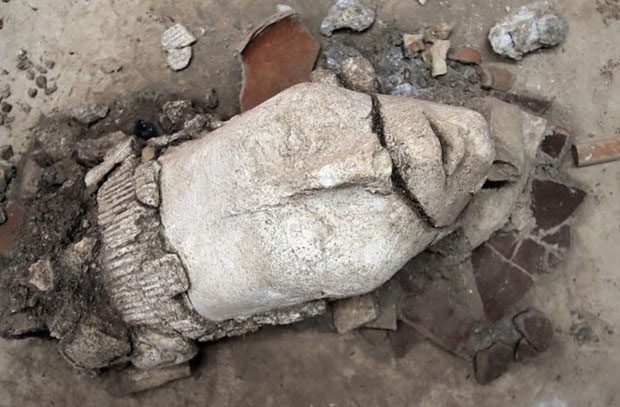Scientists from the National Institute of Anthropology and History of Mexico (INAH) have unearthed a statue of the Maize God, the most important deity in Maya belief, dating back approximately 1,300 years.

Head of the Maize God, the most important deity in Maya belief. (Source: heritagedaily).
This is the first time researchers have found a statue depicting the head of the Maize God at the archaeological site of Palenque, located in the Chiapas state of northern Mexico.
In previous discoveries, complete representations of the Maize God only appeared in murals or illustrations on pottery and ceramic plates. The plaster statue measures a maximum length of 45 cm, a width of 16 cm, and a height of 22 cm.
According to scientists, the statue portrays the Maize God with “graceful” features such as a pointed and cleft chin, thin lips revealing upper front teeth, slender, rounded cheekbones, elongated eyes, a broad, flat forehead, and a sharp nose.
The statue is oriented East-West, symbolizing the birth of maize as it receives the first rays of sunlight.
Archaeologists believe the statue is part of a rich offering placed in a water pit measuring 1×3 meters, surrounded by a plastered edge, mimicking the entrance to the underworld in Maya belief.
The specimen is placed on a three-legged plate, implying that this is the head severed from the body. Many previously found statues also depict the headless image of the Maize God.
According to researcher Arnoldo González Cruz from INAH, this discovery reveals much about the ancient Maya belief system related to the birth, death, and resurrection of the Maize God. In mythology, the Maya people were created from corn dough.
The “Maize God” of the Maya is depicted as a young man, embodying the seeds sown into the earth. In the underworld, the Maize God travels on a boat steered by gods and ultimately sprouts on the back of a turtle, symbolizing the earth.





















































